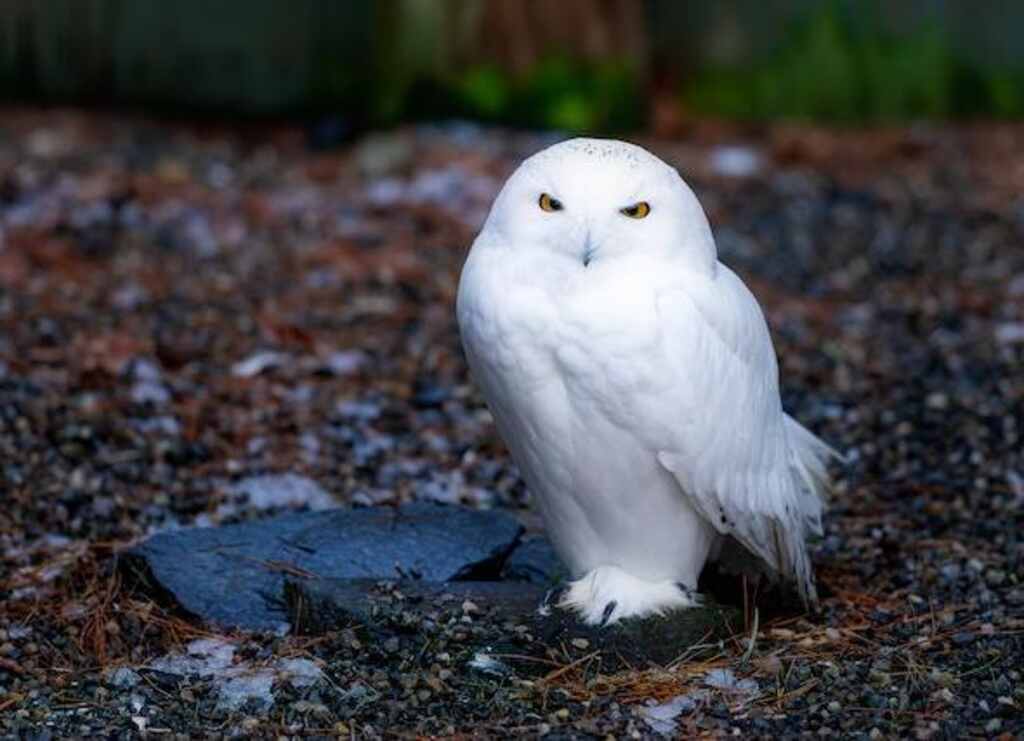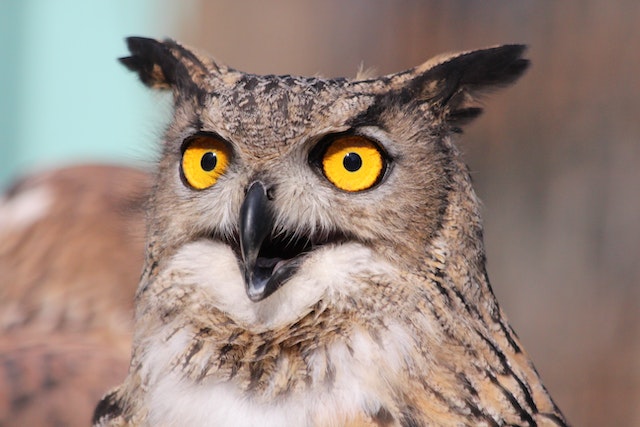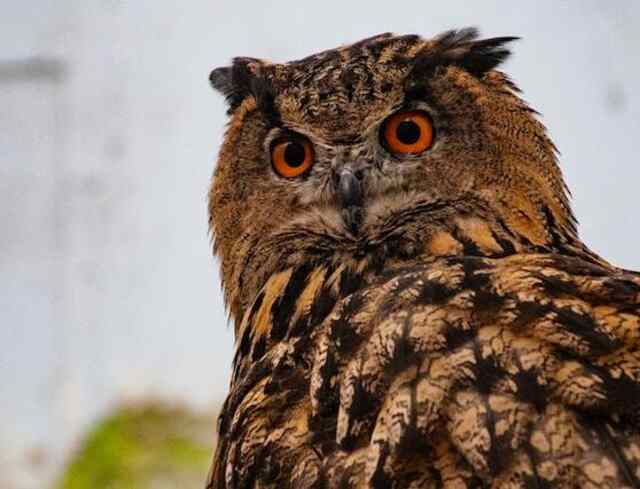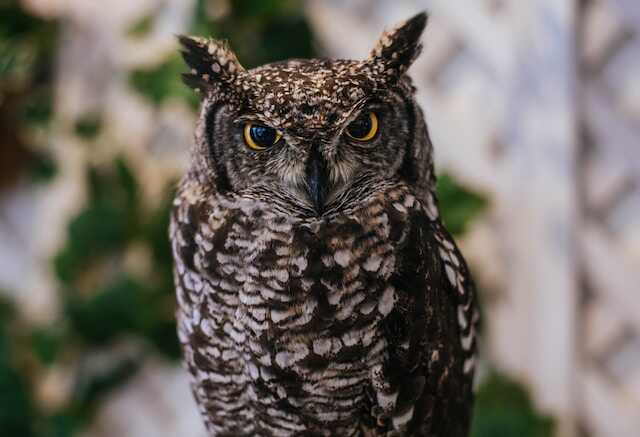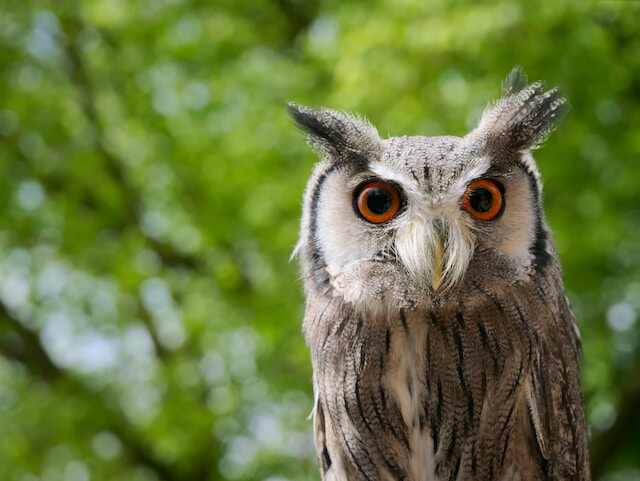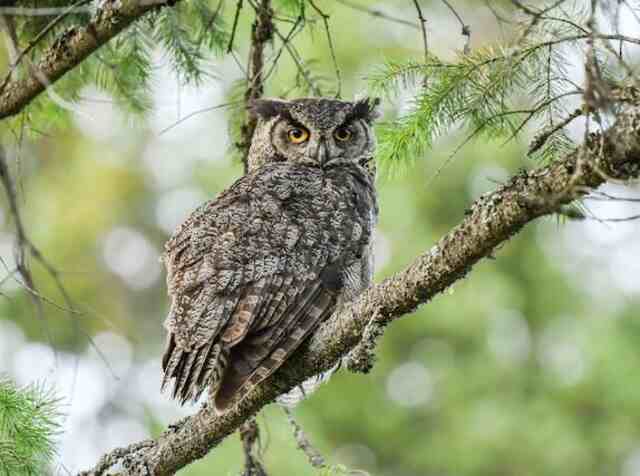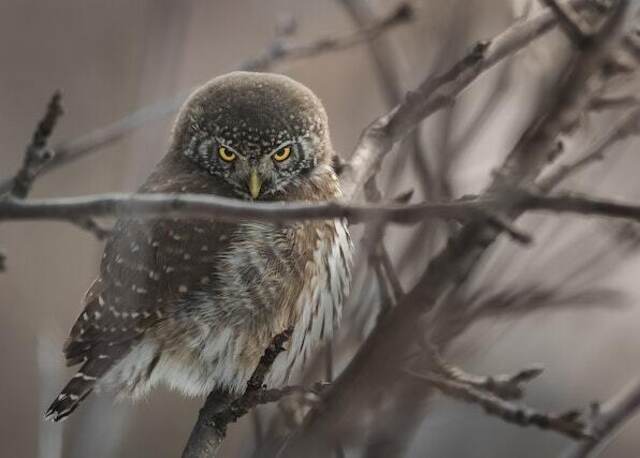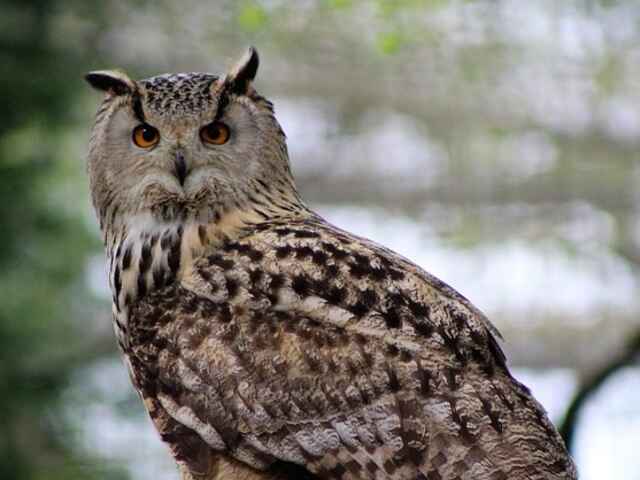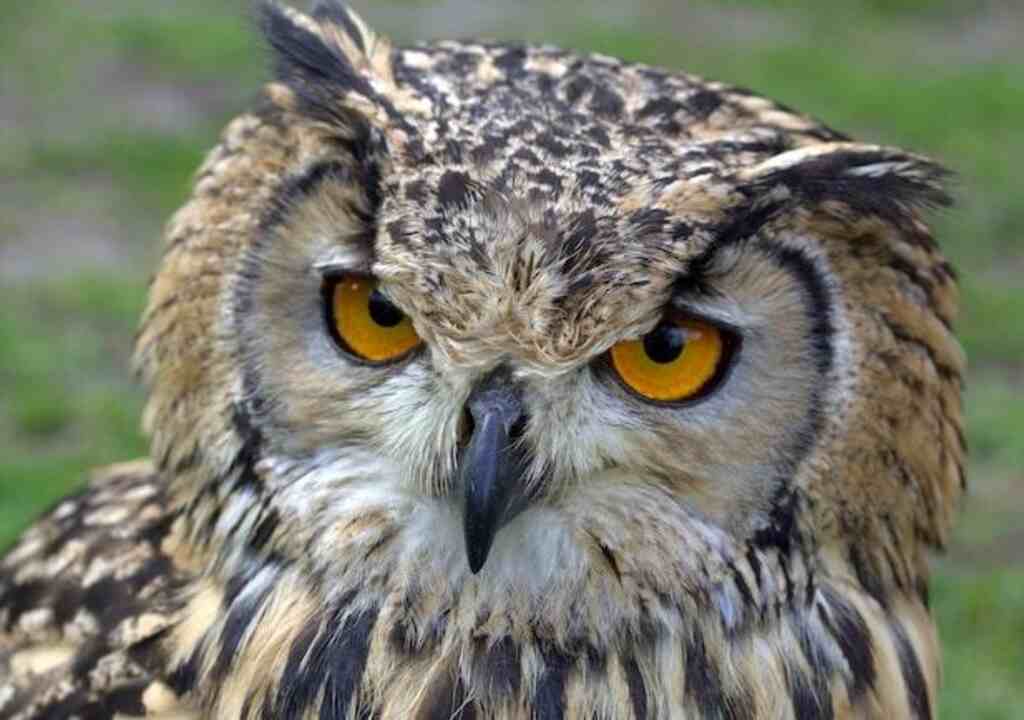Owls, with their mysterious nocturnal habits and haunting calls, have long fascinated bird enthusiasts and casual observers alike. One intriguing question that often arises is, “Do owls actually sleep?” Unlike most birds, owls have unique sleep patterns that set them apart from their avian counterparts.
In this article, we delve into the captivating world of owl sleep, exploring their unusual habits and uncovering surprising facts about how these enigmatic creatures rest. Join us as we unravel the mysteries of owl sleep patterns and discover what makes their slumber so extraordinary.
Table of Contents
- 1 Do Owls Sleep?
- 2 Species-Specific Sleep:
- 3 Brief Overview of Owl Habitats
- 4 Importance of Understanding Where Owls Sleep
- 5 Natural habitats for owls to sleep
- 6 Unique Sleeping Habits of Different Owl Species
- 7 Protection measures for owl sleeping habitats
- 8 Installing nest boxes and roosts in urban areas
- 9 Encouraging responsible land use practices
- 10 Summary of Key Points Discussed in the Article
- 11 Importance of Preserving Owl Habitats for Their Survival
- 12 Final Thoughts on Where Do Owls Sleep
- 13 Author
Do Owls Sleep?
Owls, those enigmatic creatures of the night, have their own peculiar sleep habits. They primarily sleep during the day, perching upright in trees or rocky areas. Some species are diurnal, choosing to sleep at night. On average, owls get 10 to 17 hours of rest per day, conserving energy for their nighttime escapades.
Species-Specific Sleep:
Nocturnal Owls:
- Barn owl (Tyto alba)
- Flammulated owl (Psiloscops flammeolus)
- Eastern screech-owl (Megascops asio)
- Western screech-owl (Megascops kennicottii)
- Whiskered screech-owl (Megascops trichopsis)
- Great horned owl (Bubo virginianus)
- Spotted owl (Strix occidentalis)
- Elf owl (Micrathene whitneyi)
- Boreal owl (Aegolius funereus)
- Northern saw-whet owl (Aegolius acadicus)
- Long-eared owl (Asio otus)
Diurnal Owls:
- Snowy owl (Bubo scandiacus)
- Northern hawk owl (Surnia ulula)
- Burrowing owl (Athene cunicularia)
Brief Overview of Owl Habitats
Owls can be found in various habitats worldwide. They can be found in forests, deserts, grasslands, tundras, and even urban areas.
Different species of owls have different habitat preferences based on factors such as food availability and nesting sites.
Forest-dwelling owls typically prefer old-growth forests with large trees for nesting and roosting sites.
Desert-dwelling owls may use cacti or rocky outcroppings for shelter, while grassland owls will use burrows and tunnels dug by other animals.
Importance of Understanding Where Owls Sleep
Understanding where owls sleep is important for several reasons. First, it helps us understand their behavior patterns so we can better observe and study them in the wild.
Second, knowing where they sleep helps conservationists protect habitats that are essential to their survival. In addition to being fascinating creatures to observe in the wild, owls also play an important role in maintaining ecosystems.
They prey on rodents and other small mammals that can cause damage to crops or spread disease.
By understanding where they sleep, we can help ensure that these vital predators remain healthy and thriving in their habitats.
In the following sections, we will explore natural habitats that owls use for sleeping as well as man-made habitats created specifically for them.
We will also examine some unique sleeping habits among different owl species and discuss measures aimed at protecting their sleeping habitats from destruction or harm caused by human activity.
Read more; How Do Owls Sleep? Uncovering Their Nocturnal Habits!
Natural habitats for owls to sleep
Owls prefer to sleep in natural habitats. These are the places where they would normally establish their roosts in the wild.
Some of the common natural habitats for owls include tree cavities and hollows, cliff ledges and rocky outcroppings, and ground burrows and tunnels.
Tree cavities and hollows
Tree cavities and hollows are one of the most common nesting sites for different owl species. Owls that prefer this type of sleeping habitat include barred owls, great horned owls, and screech owls.
The size of the cavity will depend on the size of the owl species that inhabits it. For example, screech owls usually select a smaller cavity compared to great horned owls.
The interior of a tree cavity or hollow provides insulation against temperature fluctuations, which is an essential factor for maintaining body warmth during colder months.
Besides providing a comfortable sleeping site, these natural cavities also offer protection against predators such as raccoons or squirrels that could prey on owl eggs or chicks.
Cliff ledges and rocky outcroppings
Owls that live in areas with steep cliffs or rocky outcroppings often use them as sleeping places during both day and nighttime.
Cliff dwelling species include eagles, falcons, hawks, but also some owl species like barn owls or long-eared owls.
The protected crevices in these cliffs provide shelter from harsh extreme weather conditions such as heat waves or snowstorms.
They also provide a height advantage, where birds can survey their surroundings from an elevated position while looking for prey.
Ground burrows and tunnels
Burrowing owl is one of several species that prefer ground burrows as their primary sleeping habitat. They dig their nests in the ground or use abandoned burrows of prairie dogs, badgers, or other burrowing animals.
Ground burrows offer protection against predators such as coyotes and hawks, which are common threats to these owls.
Ground burrows provide good insulation against temperature fluctuations during both summer and winter months.
Owls that live in ground tunnels also benefit from the humidity provided by the soil, which helps to prevent dehydration and keep their feathers healthy.
Natural habitats for sleeping owls are essential for the survival of different owl species.
Understanding these habitats and how they function can aid in conservation efforts aimed at preserving these vital resources.
Tree cavities and hollows, cliff ledges and rocky outcroppings, and ground burrows and tunnels offer unique advantages that meet specific needs for different owl species.
Man-made habitats for owls to sleep
Owls are adaptable creatures and can take advantage of man-made structures for their sleeping needs. The following are some of the common man-made habitats where owls can be found sleeping:
Nest boxes and artificial roosts
Nest boxes or owl houses are specially designed structures that mimic natural nest sites such as tree cavities, hollows or crevices.
Nest boxes are commonly used to encourage owls to breed in areas where natural nesting sites may be limited or destroyed by human activities.
These boxes can also provide shelter for non-breeding owls looking for a safe place to roost during the day. Artificial roosts, on the other hand, are often created by conservationists or bird enthusiasts.
They can come in various forms such as platforms or perches placed in trees, poles or even buildings. These roosts provide additional resting places for nocturnal birds like owls.
Barns, sheds, and other buildings
Barns and sheds offer safe havens for many owl species, since they offer protection from predators and the elements.
Owls can use these structures to nest, breed or simply rest during the day before starting their nocturnal activities at night.
Buildings in urban areas that have become vacant may also become prime sleeping spots for owls since they often mimic tree cavities where they would naturally sleep.
Power poles and transmission towers
Power poles and transmission towers are becoming increasingly popular among some owl species due to their high vantage point where they can survey their prey’s movements from afar.
Some utility companies have even started installing special nesting platforms on these structures to protect them from electrocution while promoting conservation efforts.
Man-made habitats have provided an important supplement to natural habitats that have been lost due to human activities.
Conservationists and bird enthusiasts have taken advantage of this to create structures that offer safe havens for owls to sleep and breed.
However, care must be taken to maintain these structures properly so that they remain safe for both the owls and human beings.
Unique Sleeping Habits of Different Owl Species
Owls are a diverse group of birds, with over 200 species found worldwide. Each species has its own unique set of behaviors and adaptations to help it survive in its environment.
One such adaptation is their sleeping habits, which can vary greatly between different owl species. Here are three examples of owls with particularly interesting sleeping habits:
Burrowing Owls Sleeping in Underground Tunnels
Burrowing owls (Athene cunicularia) are found throughout North and South America, living in grasslands and deserts. As their name suggests, they typically nest in underground burrows that have been dug by other animals, such as prairie dogs or ground squirrels.
During the day, burrowing owls can often be seen perched outside their burrows or hunting for prey nearby. But at night, they retreat into the safety of their tunnels to sleep. Burrowing owls have several adaptations that make them well-suited for living underground.
For example, they have long legs that enable them to walk on uneven surfaces and navigate through narrow tunnels. They also have large eyes that provide excellent vision in low-light conditions, allowing them to see predators approaching from a distance.
Snowy Owls Sleeping on the Ground in the Arctic Tundra
Snowy owls (Bubo scandiacus) are one of the largest owl species and are found in the northernmost parts of North America, Europe, and Asia. They live in open tundra habitats where there is little vegetation or cover available for nesting or roosting.
Instead, snowy owls often sleep on the ground or on mounds of snow during the long winter months. Sleeping on the ground might seem risky for a bird like an owl that relies on camouflage to avoid predators.
However, snowy owls have adapted to their environment by growing thick feathers that help them blend in with the snow and ice. They also have keen hearing that allows them to detect potential threats from far away.
Great Horned Owls Sleeping in the Nests of Other Birds
Great horned owls (Bubo virginianus) are found throughout North and South America, living in a range of habitats from forests to deserts. They are known for their distinctive ear tufts and deep hooting calls.
Great horned owls are also unique in that they often use the abandoned nests of other birds as roosting sites, particularly those of hawks and crows.
By using existing nests, great horned owls avoid having to build their own structures from scratch.
This saves time and energy, which is especially important during breeding season, when they need to focus on raising young.
Great horned owls will also add nesting material or make other modifications to the nest as needed to make it more comfortable for sleeping.
Protection measures for owl sleeping habitats
Why protection is necessary
Protecting owl habitats is crucial to their survival. Owls depend on specific types of environments to sleep, nest, and hunt.
Unfortunately, many of these environments are under threat due to human activity, such as deforestation and urbanization.
Without adequate protection measures in place, owls may lose their habitats, which could lead to a decline in the population.
Conservation efforts to protect natural habitats
Conservation efforts for owls focus on preserving natural habitats. This includes protecting areas of forest and grassland that provide suitable habitat for different species of owls.
Conservation organizations work with landowners and governments to create protected areas where owls can thrive without disruption from logging or development.
Research also plays an important role in conservation efforts – scientists study the behavior and ecology of different owl species to better understand their needs.
Installing nest boxes and roosts in urban areas
The importance of urban habitat
Urbanization is one of the biggest threats facing owl populations around the world. As more cities grow, natural habitats are destroyed or fragmented, making it difficult for owls to find suitable places to sleep or nest.
Installing nest boxes and roosts in urban areas can help mitigate some of these effects by providing artificial habitat where none exists.
Challenges with installing artificial roosts
Installing nest boxes or roosts in urban areas is not without its challenges. For example, there may be limited space available for installation due to existing buildings or infrastructure such as power poles or transmission towers that already serve as potential owl sleeping sites.
Additionally, some locations may be too noisy or brightly lit at night – factors that can make it difficult for owls to sleep comfortably.
Encouraging responsible land use practices
Partnering with landowners and businesses
Encouraging responsible land use practices is an important step in protecting owl habitats. This can involve partnering with landowners and businesses to create wildlife-friendly habitats on their properties, such as planting native trees or shrubs that provide food and shelter for owls.
The role of community involvement
Community involvement is also key. Raising awareness about the importance of protecting owl habitats can help generate support for conservation efforts.
Local residents can be encouraged to take action by creating backyard habitats or participating in citizen science projects that help monitor owl populations.
By engaging people at the grassroots level, we can work towards a future where owls continue to thrive in the wild.
Summary of Key Points Discussed in the Article
Throughout this article, we have explored the natural and man-made habitats where owls sleep. From tree cavities to artificial roosts and transmission towers, we have discussed the many options available for these nocturnal birds.
Additionally, we have examined the unique sleeping habits of different owl species, such as burrowing owls sleeping in underground tunnels and snowy owls sleeping on the ground in the Arctic tundra.
It is important to understand where owls sleep because it can help us protect their habitats and ensure their survival.
Owls are essential to our ecosystem as they control rodent populations and serve as indicators of overall environmental health. By preserving their habitats, we can maintain a healthy balance in our ecosystem.
Importance of Preserving Owl Habitats for Their Survival
Owls face numerous threats to their habitats including habitat destruction due to deforestation, urbanization, and land conversion for agriculture. The construction of wind turbines also poses a significant threat due to collisions with the blades.
Additionally, pesticides used by farmers can accumulate in owl prey, causing reproductive failure or death. Conservation efforts are crucial in protecting owl habitats from these threats.
Installing nest boxes and roosts in urban areas is one way that conservationists are helping owls adapt to changing environments while encouraging responsible land use practices like preserving natural vegetation around waterways that run through farmland areas.
Final Thoughts on Where Do Owls Sleep
Understanding where owls sleep is important for both conservation efforts and ecological health. By exploring natural habitats such as tree cavities or man-made structures like nest boxes or transmission towers, we can provide suitable homes for these nocturnal creatures.
Furthermore, preserving their habitats is essential for their survival as they play an essential role in controlling rodent populations among other things that keep our ecosystem healthy.
We must remain vigilant in our conservation efforts and continue to work towards responsible land use practices while reducing the impact of human activities on owl habitats.
By doing so, we can preserve the natural beauty and balance of our environment for generations to come.

